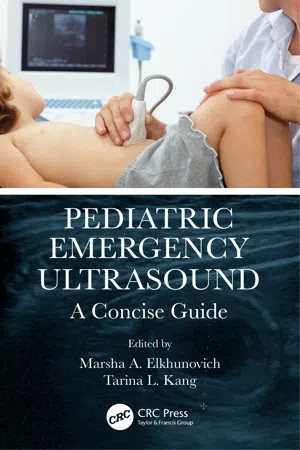
eBook - ePub
Pediatric Emergency Ultrasound
A Concise Guide
This is a test
- 238 pages
- English
- ePUB (mobile friendly)
- Available on iOS & Android
eBook - ePub
Pediatric Emergency Ultrasound
A Concise Guide
Book details
Book preview
Table of contents
Citations
About This Book
This concise, portable manual provides practitioners and future practitioners with a basic guide to pediatric emergency ultrasound, enabling them to learn the fundamentals of bedside ultrasound and use these to refresh their skills prior to, or when, performing it on a patient.
Frequently asked questions
At the moment all of our mobile-responsive ePub books are available to download via the app. Most of our PDFs are also available to download and we're working on making the final remaining ones downloadable now. Learn more here.
Both plans give you full access to the library and all of Perlego’s features. The only differences are the price and subscription period: With the annual plan you’ll save around 30% compared to 12 months on the monthly plan.
We are an online textbook subscription service, where you can get access to an entire online library for less than the price of a single book per month. With over 1 million books across 1000+ topics, we’ve got you covered! Learn more here.
Look out for the read-aloud symbol on your next book to see if you can listen to it. The read-aloud tool reads text aloud for you, highlighting the text as it is being read. You can pause it, speed it up and slow it down. Learn more here.
Yes, you can access Pediatric Emergency Ultrasound by Marsha A. Elkhunovich, Tarina L. Kang, Marsha A. Elkhunovich, Tarina L. Kang in PDF and/or ePUB format, as well as other popular books in Medicine & Medical Theory, Practice & Reference. We have over one million books available in our catalogue for you to explore.
Information
PART
I
Circulatory system
1Cardiac
2Inferior vena cava
1
Cardiac
Indications
●Aid in identification of cardiac arrest during resuscitation.
●Rapidly assess the global systolic function of a patient presenting with hemodynamic instability or shock.
●Evaluate for evidence of cardiac tamponade in the setting of blunt or penetrating trauma.
●Assess patient’s volume status by evaluation of inferior vena cava.
●Assess patient’s response to resuscitation with serial examinations.
Probe selection
●5-1 MHz low-frequency phased array transducer.
Technique: (Screen indicator located on the left)
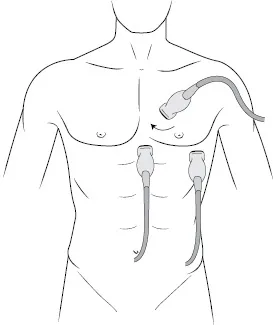
Figure 1.1 Probe placement for focused cardiac ultrasound.
Parasternal short-axis view
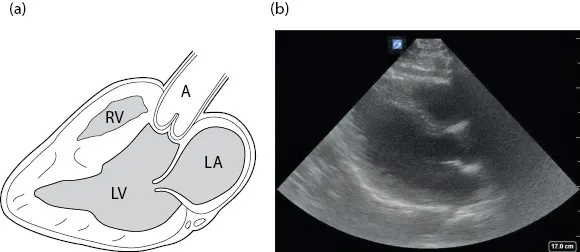
Figure 1.2 Anatomical drawing of parasternal long axis (a) with still image (b).
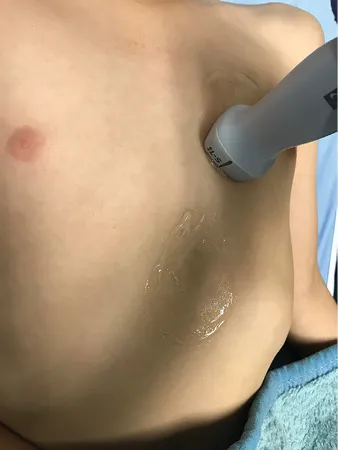
Figure 1.3 Parasternal long view. Probe indicator pointing toward the patient’s left hip.
●Place probe over left parasternal border at the level of the nipple.
●Probe marker should face patient’s right elbow/right hip (90° clockwise from parasternal long-axis view).
Parasternal long-axis view
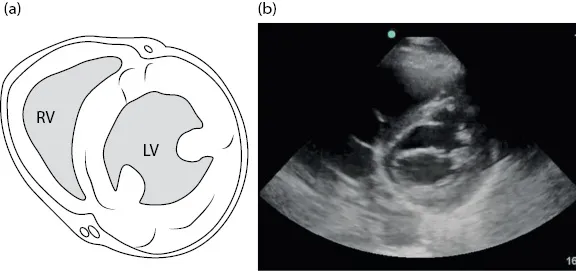
Figure 1.4 Anatomical drawing of parasternal short axis (a) with still image (b).
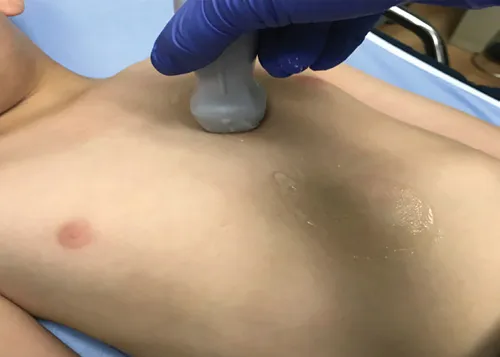
Figure 1.5 Parasternal short view. Probe indicator pointing toward the patient’s right hip.
●Place probe over left parasternal border at the level of the nipple.
●Probe marker should face patient’s left elbow/left hip.
Subxiphoid view

Figure 1.6 Anatomical drawing of subxiphoid view (a) with still image (b).

Figure 1.7 Subxiphoid view. Probe fanned from patient’s right to left, using the liver as an acoustic window to visualize the heart.
●Place the probe below the xiphoid process aiming up and into the thoracic cavity.
●Use the liver as an acoustic win...
Table of contents
- Cover
- Half Title
- Title Page
- Copyright Page
- Contents
- Introduction
- Ultrasound probes
- Part I: Circulatory system
- Part II: Respiratory system
- Part III: Musculoskeletal system
- Part IV: Integumentary System
- Part V: Digestive System
- Part VI: Trauma
- Part VII: Renal, urinary, and reproductive systems
- Part VIII: Procedural
- Part IX: Nervous system
- Bibliography
- Index